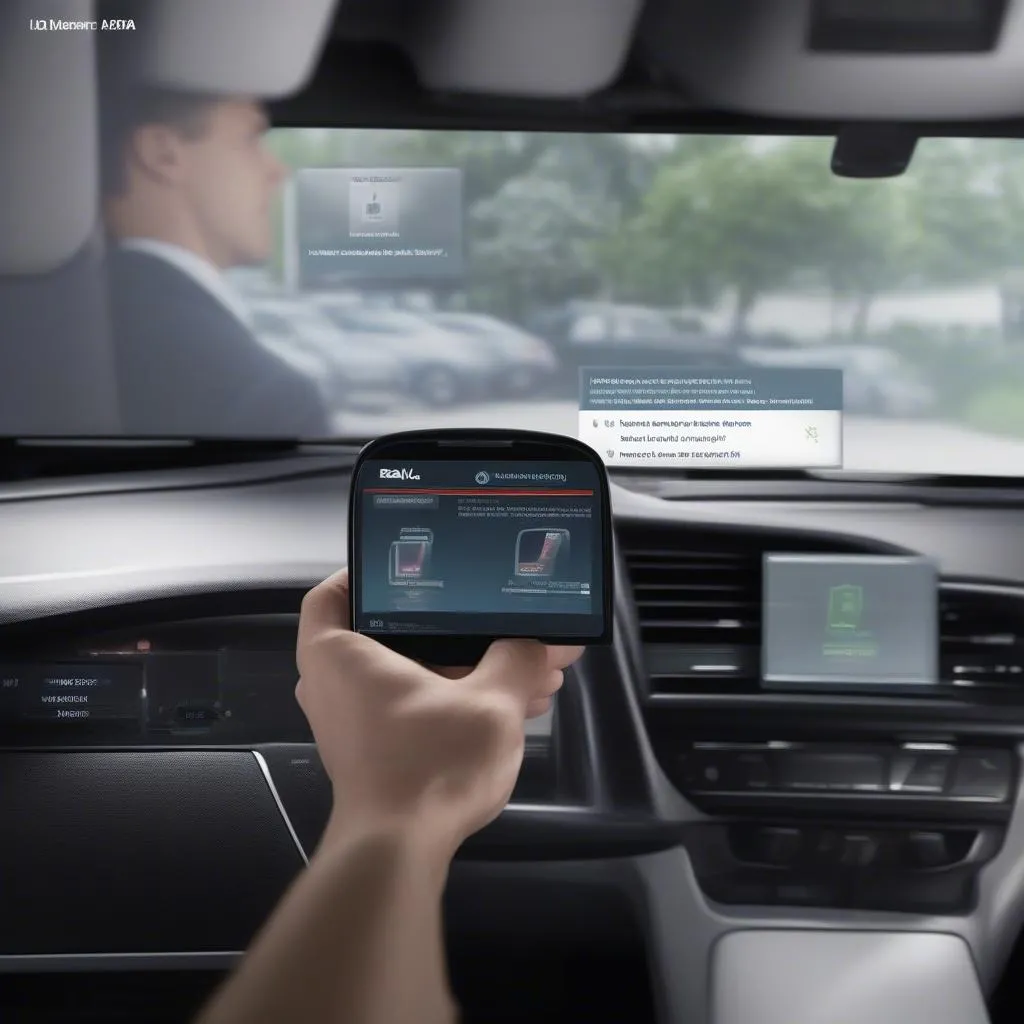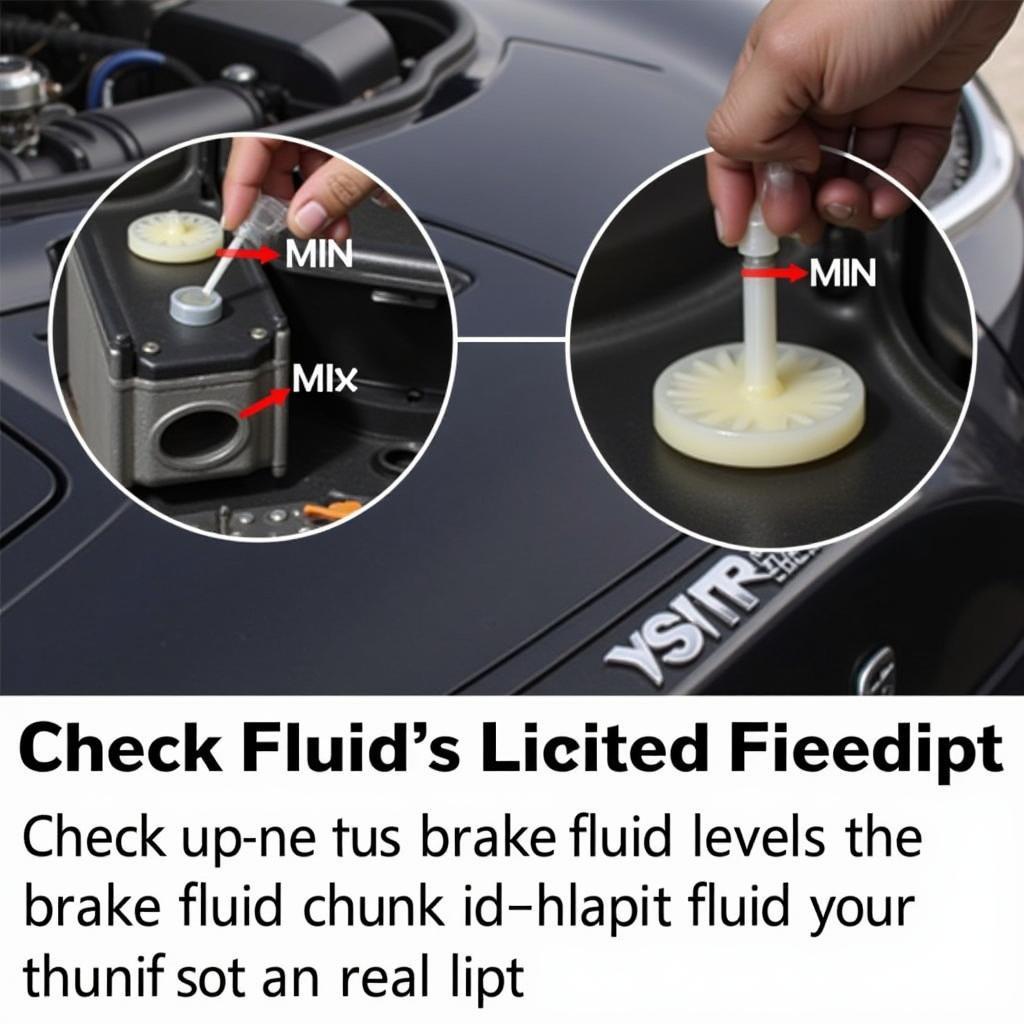If you’re experiencing issues with your 2011 Buick Lacrosse displaying “Service Traction Assist” and “Service Brake Assist” warnings, you’re not alone. These alerts can be triggered by various factors and often occur simultaneously. This comprehensive guide delves into the common causes, diagnostic approaches, and potential solutions for these warning messages in your 2011 Buick Lacrosse.
Understanding the Warning Messages
Before diving into diagnostics, it’s crucial to understand what these warning messages signify.
-
Service Traction Assist: This warning indicates a problem with your vehicle’s traction control system, which helps prevent wheel spin and maintain grip on slippery surfaces. When this system malfunctions, it may disable itself, and the warning light illuminates.
-
Service Brake Assist: This warning signals an issue with your brake assist system, which amplifies braking force during emergency stops. Malfunctions can impact the system’s ability to provide additional braking power when needed.
These systems often share sensors and components. Therefore, a fault in one can trigger a warning in the other.
Common Causes
Several factors can trigger the “Service Traction Assist” and “Service Brake Assist” warnings in your 2011 Buick Lacrosse:
-
Wheel Speed Sensor Issues: Faulty wheel speed sensors, responsible for relaying wheel speed information to the car’s computer, are among the most common culprits. A malfunctioning sensor can disrupt the traction control and brake assist systems.
-
Steering Angle Sensor Problems: The steering angle sensor determines the steering wheel’s position. If it sends incorrect data, it can confuse the traction control system, leading to the warning message.
-
Brake System Problems: Issues within the braking system itself, such as low brake fluid levels, worn brake pads, or a faulty brake light switch, can also trigger these warnings.
-
Electronic Control Unit (ECU) Malfunction: While less common, a problem with the ECU, the vehicle’s central computer, can disrupt various systems, including traction control and brake assist.
Diagnostic Approaches
Accurately diagnosing the root cause of these warnings is essential for effective repair. Here are some steps to take:
-
Retrieve Diagnostic Trouble Codes (DTCs): Use a professional-grade OBD-II scanner to read the specific diagnostic trouble codes stored in your vehicle’s computer. These codes provide valuable insights into the potential source of the problem.
-
Inspect Wheel Speed Sensors: Visually inspect all four wheel speed sensors for any signs of damage, corrosion, or debris. Check their wiring harnesses for any fraying or loose connections.
-
Test Steering Angle Sensor: Using a specialized scanner, test the steering angle sensor’s functionality. This often involves turning the steering wheel from lock to lock while monitoring the sensor’s readings.
-
Examine Brake System Components: Check your brake fluid level. Inspect brake pads for excessive wear. Test the brake light switch for proper operation.
-
Consult a Qualified Technician: If you’re unable to pinpoint the issue yourself, it’s best to consult a qualified technician specializing in Buick vehicles. They have the expertise and tools to diagnose and resolve complex electronic issues.
Potential Solutions
Once you’ve identified the root cause, you can explore solutions. Here are some common fixes:
-
Replace Faulty Sensors: If a wheel speed sensor, steering angle sensor, or brake light switch is faulty, replacement is typically the most effective solution.
-
Repair Wiring Issues: Repair or replace any damaged or corroded wiring harnesses connected to the affected systems.
-
Address Brake System Problems: Replenish low brake fluid, replace worn brake pads, or address other identified brake system issues.
-
Update or Reprogram ECU: In some cases, a software update or reprogramming of the ECU may be necessary to rectify the problem.
Remote Diagnostics and Programming
Advancements in automotive technology have paved the way for remote diagnostics and programming. Consider these options:
-
Remote Diagnostic Services: Some reputable automotive service providers offer remote diagnostic services. Using specialized equipment, they can connect to your vehicle remotely to read diagnostic codes and assess the situation.
-
Remote Software Updates and Programming: In specific instances, software updates or reprogramming for your vehicle’s ECU can be performed remotely by certified technicians using specialized tools.
“Remote diagnostics and programming are transforming the automotive repair landscape,” says John Smith, Senior Automotive Engineer at XYZ Automotive Solutions. “These technologies offer convenience and efficiency, allowing vehicle owners to address certain issues remotely without visiting a repair shop.”
Conclusion
Experiencing “Service Traction Assist” and “Service Brake Assist” warnings in your 2011 Buick Lacrosse can be concerning. However, understanding the common causes, diagnostic approaches, and potential solutions can help you address these issues effectively.
Remember, promptly diagnosing and resolving these warnings is vital for ensuring your safety and the optimal performance of your vehicle. If you’re unsure about any aspect of the diagnostic or repair process, seeking assistance from a qualified technician specializing in Buick vehicles is always recommended.


